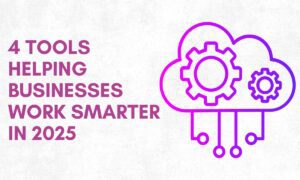Printed Circuit Board (PCB) assembly is a crucial phase in bringing electronic devices to life. It’s the intricate process of transforming bare PCBs into functional, component-populated boards. Understanding this process and its associated costs is essential for engineers, designers, and manufacturers alike.
The Process of PCB Assembly:
PCB Manufacturing Cost Factors
PCB production involves various cost-influencing factors, including:
- PCB Material: From single-sided to multi-layered boards, material choice (like FR-4, CEM-3) and thickness impact cost.
- Manufacturing Process: Different processes such as gold-plating or tin-spraying lead to price variations.
- PCB Complexity: Specifications like hole diameter, line width, and layer count significantly influence production costs.
- PCB Production Grade: Different standards (Class 1 or Class 3) impact qualification rates and thus affect prices.
- Manufacturer Variances: Costs differ between manufacturers due to varying procurement, management, and technical factors.
- Payment Terms: Full payments usually fetch discounts, while longer payment periods might increase prices.
- Manufacturer Location: Manufacturing in regions with complete supply chains might offer more affordable pricing.
Component Purchase Costs
Component procurement is a significant aspect affecting assembly costs. PCB assembly manufacturers often establish robust supply chains with component suppliers, which can streamline the process and reduce PCB assembly cost.
Surface Mount Technology (SMT) Processing
SMT is a prevalent assembly method involving surface-mounted components without leads. It includes:
Equipment Needed: Printing machines, placement machines, reflow soldering, and testing equipment.
Material Requirements: PCB sheets, components, and solder paste.
SMT vs. DIP Processing: SMT offers high density, reliability, and cost-efficiency compared to Dual In-line Package (DIP) processing.
Calculating SMT Processing Cost
SMT cost computation involves various factors:
Engineering Costs: Often applicable for orders below a specific quantity.
Stencil Costs: Associated with the use of stencils for soldering.
Patch Point Calculation: Determined by component types and their complexity.
Unit Price of Patch Points: Typically, within the range of 0.0015-0.002 USD.
PCB Assembly Testing Costs
The testing phase incurs additional costs, usually around $0.3 per PCB, with the assembly and packaging costs averaging at $0.15 per piece. Larger quantities might reduce testing costs.
Understanding Cost Reduction Strategies
Efficient cost management in PCB assembly involves strategic decisions:
- Choosing the Right Manufacturer: Opt for specialized, efficient, and customized PCB assembly factories for smaller quantities to benefit from their speed and efficiency.
- Component Procurement: Prefer suppliers with available inventory to avoid additional time and cost for external procurement.
- PCB Material Selection: Stick to conventional materials unless specific processes demand specialized plates like aluminum or copper substrates.
- Assessment of Additional Costs: Ensure clarity on any additional charges for assembly testing and packaging.
Balancing Cost and Quality
While reducing costs is crucial, compromising product quality is never an option. Prioritizing quality over cost-cutting measures ensures durable, reliable PCB assemblies that align with industry standards and customer expectations.
PCBasic: High-Quality PCBs at Unbeatable Prices
PCBasic stands as a valuable resource in the realm of PCB assembly, offering a platform where high-quality PCBs are accessible at remarkably low costs. With a commitment to quality, precision, and affordability, PCBasic ensures a seamless experience for engineers, designers, and manufacturers seeking top-notch circuit boards for their projects. Through their streamlined processes, optimized supply chains, and dedication to customer satisfaction, PCBasic emerges as a go-to destination, providing not just cost-effective solutions but also upholding stringent standards for PCB excellence
FAQs About PCB Assembly Costs
What is the average cost of PCB assembly?
The average price ranges from $0.02 to $0.05 per square inch, contingent upon design complexity and labor involved.
How does design complexity impact assembly costs?
More intricate designs often incur higher manufacturing expenses due to increased labor and material requirements.
What role does component quality play in cost determination?
Higher-quality components typically contribute to increased expenses, but they ensure reliability and performance.
Why is labor cost significant in PCB assembly?
Skilled labor affects assembly precision and efficiency, influencing overall costs.
How does the choice of assembly method affect expenses?
Different assembly methods come with varying costs, depending on their complexity and technological requirements.
Can extended lead times reduce PCB assembly costs?
Extended lead times may result in lower pricing due to reduced urgency in manufacturing.
Are there cost differences based on the number of layers in a design?
Yes, more layers in a design often lead to increased manufacturing expenses.
Does packaging impact overall assembly costs?
Quality packaging ensures product integrity but may contribute to overall expenses.
Is it advisable to opt for cheaper assembly methods?
Balancing cost-effectiveness and quality are crucial; choosing cheaper methods might compromise product reliability.
How can one optimize PCB assembly costs without compromising quality?
Careful planning, understanding project requirements, and selecting reliable suppliers can optimize costs while maintaining quality standards.
Conclusion
PCB assembly costs are influenced by multiple factors ranging from material selection to assembly techniques. Understanding these intricacies is vital for effective cost estimation and management in the PCB assembly process. By leveraging cost reduction strategies without compromising quality, manufacturers can strike a balance between affordability and functionality, delivering superior electronic products to the market.



































